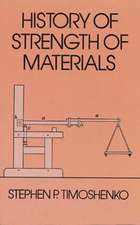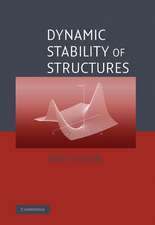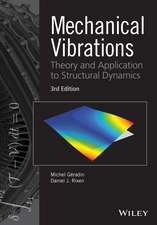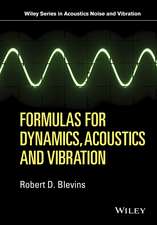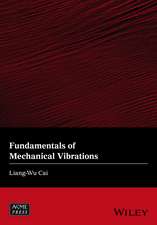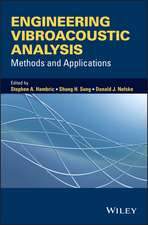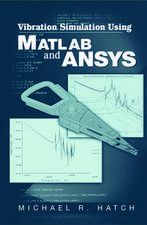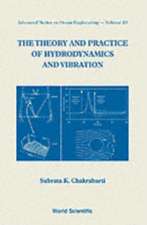Modelling with Transparent Soils: Visualizing Soil Structure Interaction and Multi Phase Flow, Non-Intrusively: Springer Series in Geomechanics and Geoengineering
Autor Magued Iskanderen Limba Engleză Paperback – 5 sep 2012
| Toate formatele și edițiile | Preț | Express |
|---|---|---|
| Paperback (1) | 947.18 lei 6-8 săpt. | |
| Springer Berlin, Heidelberg – 5 sep 2012 | 947.18 lei 6-8 săpt. | |
| Hardback (1) | 951.29 lei 6-8 săpt. | |
| Springer Berlin, Heidelberg – 3 iun 2010 | 951.29 lei 6-8 săpt. |
Din seria Springer Series in Geomechanics and Geoengineering
- 18%
 Preț: 1594.49 lei
Preț: 1594.49 lei - 18%
 Preț: 1008.12 lei
Preț: 1008.12 lei - 18%
 Preț: 1407.43 lei
Preț: 1407.43 lei - 18%
 Preț: 1386.17 lei
Preț: 1386.17 lei - 18%
 Preț: 2175.30 lei
Preț: 2175.30 lei - 18%
 Preț: 2310.28 lei
Preț: 2310.28 lei - 18%
 Preț: 956.03 lei
Preț: 956.03 lei - 15%
 Preț: 648.56 lei
Preț: 648.56 lei - 18%
 Preț: 1851.00 lei
Preț: 1851.00 lei - 18%
 Preț: 970.87 lei
Preț: 970.87 lei - 18%
 Preț: 898.75 lei
Preț: 898.75 lei - 18%
 Preț: 948.16 lei
Preț: 948.16 lei - 20%
 Preț: 651.75 lei
Preț: 651.75 lei - 18%
 Preț: 1219.46 lei
Preț: 1219.46 lei - 18%
 Preț: 1228.29 lei
Preț: 1228.29 lei - 18%
 Preț: 946.24 lei
Preț: 946.24 lei - 15%
 Preț: 646.62 lei
Preț: 646.62 lei - 18%
 Preț: 1588.19 lei
Preț: 1588.19 lei - 24%
 Preț: 1703.08 lei
Preț: 1703.08 lei - 24%
 Preț: 884.82 lei
Preț: 884.82 lei - 18%
 Preț: 1231.64 lei
Preț: 1231.64 lei - 18%
 Preț: 954.45 lei
Preț: 954.45 lei - 18%
 Preț: 948.47 lei
Preț: 948.47 lei - 18%
 Preț: 1847.53 lei
Preț: 1847.53 lei - 18%
 Preț: 1251.68 lei
Preț: 1251.68 lei - 20%
 Preț: 1166.52 lei
Preț: 1166.52 lei - 18%
 Preț: 1669.33 lei
Preț: 1669.33 lei - 18%
 Preț: 1233.20 lei
Preț: 1233.20 lei - 15%
 Preț: 639.59 lei
Preț: 639.59 lei - 18%
 Preț: 1008.43 lei
Preț: 1008.43 lei - 18%
 Preț: 955.40 lei
Preț: 955.40 lei - 18%
 Preț: 944.67 lei
Preț: 944.67 lei
Preț: 947.18 lei
Preț vechi: 1155.11 lei
-18% Nou
Puncte Express: 1421
Preț estimativ în valută:
181.30€ • 196.100$ • 152.39£
181.30€ • 196.100$ • 152.39£
Carte tipărită la comandă
Livrare economică 21 aprilie-05 mai
Preluare comenzi: 021 569.72.76
Specificații
ISBN-13: 9783642263552
ISBN-10: 3642263550
Pagini: 352
Ilustrații: 335 p. 55 illus. in color.
Dimensiuni: 155 x 235 x 18 mm
Greutate: 0.49 kg
Ediția:2010
Editura: Springer Berlin, Heidelberg
Colecția Springer
Seria Springer Series in Geomechanics and Geoengineering
Locul publicării:Berlin, Heidelberg, Germany
ISBN-10: 3642263550
Pagini: 352
Ilustrații: 335 p. 55 illus. in color.
Dimensiuni: 155 x 235 x 18 mm
Greutate: 0.49 kg
Ediția:2010
Editura: Springer Berlin, Heidelberg
Colecția Springer
Seria Springer Series in Geomechanics and Geoengineering
Locul publicării:Berlin, Heidelberg, Germany
Public țintă
ResearchCuprins
to Transparent Soils.- Optical Techniques in Geotechnical Engineering.- to Light and Optics.- Optical Measurement of Strain and Stress.- Geotechnical Properties of Transparent Silica Powders.- Geotechnical Properties of Silica Gels.- Geotechnical Properties of Aquabeads.- Digital Image Correlation.- Application of DIC for Measuring Deformations in Transparent Soils.- Validation of Measured 2D Deformations.- 3D Deformation Measurement.- 2D Flow in Transparent Synthetic Soils.- Epilogue.
Textul de pe ultima copertă
The fundamental premise of this monograph is that transparent synthetic materials with geotechnical properties similar to those of natural soils can be used to study 3D deformation and flow problems in natural soils. Transparent soils can be made by matching the refractive index of synthetic soil materials and the pore fluid. This monographs presents the geotechnical behaviour of several families of transparent soils that can be combined to meet model-test requirements, in terms of strength, deformation, or permeability.
"Modelling with Transparent Soils" demonstrates how an optical system consisting of a laser light, a CCD camera, a frame grabber, and a PC can be used to measure spatial deformations in transparent soil models non-intrusively. Transparent soil models are sliced optically using a laser light sheet. A distinctive speckle pattern is generated by the interaction of the laser light and transparent soil. A 2D deformation field is obtained from two speckle images by using an image processing technique named adaptive cross-correlation, which is an advanced form of the digital image cross-correlation (DIC) algorithm that utilizes both window sizing and window shifting methods. The monograph demonstrates that comparison of 2D deformation fields between transparent soil and natural soil showed that the results were comparable in almost every aspect. Three dimensional fields can be produced by combining multiple 2D fields in Matlab.
Multiphase flow and surfactant flushing tests were also simulated using a layered transparent soil systems and several contaminants. The developed technology allows for visualizing the contamination concentration and evaluating the performance of remediation technologies in bench scale model tests.
"Modelling with Transparent Soils" demonstrates how an optical system consisting of a laser light, a CCD camera, a frame grabber, and a PC can be used to measure spatial deformations in transparent soil models non-intrusively. Transparent soil models are sliced optically using a laser light sheet. A distinctive speckle pattern is generated by the interaction of the laser light and transparent soil. A 2D deformation field is obtained from two speckle images by using an image processing technique named adaptive cross-correlation, which is an advanced form of the digital image cross-correlation (DIC) algorithm that utilizes both window sizing and window shifting methods. The monograph demonstrates that comparison of 2D deformation fields between transparent soil and natural soil showed that the results were comparable in almost every aspect. Three dimensional fields can be produced by combining multiple 2D fields in Matlab.
Multiphase flow and surfactant flushing tests were also simulated using a layered transparent soil systems and several contaminants. The developed technology allows for visualizing the contamination concentration and evaluating the performance of remediation technologies in bench scale model tests.
Caracteristici
Presents the geotechnical behaviour of several families of transparent soils Demonstrates how an optical system can be used to measure spatial deformations in transparent soil models non-intrusively Written by an expert in the field




